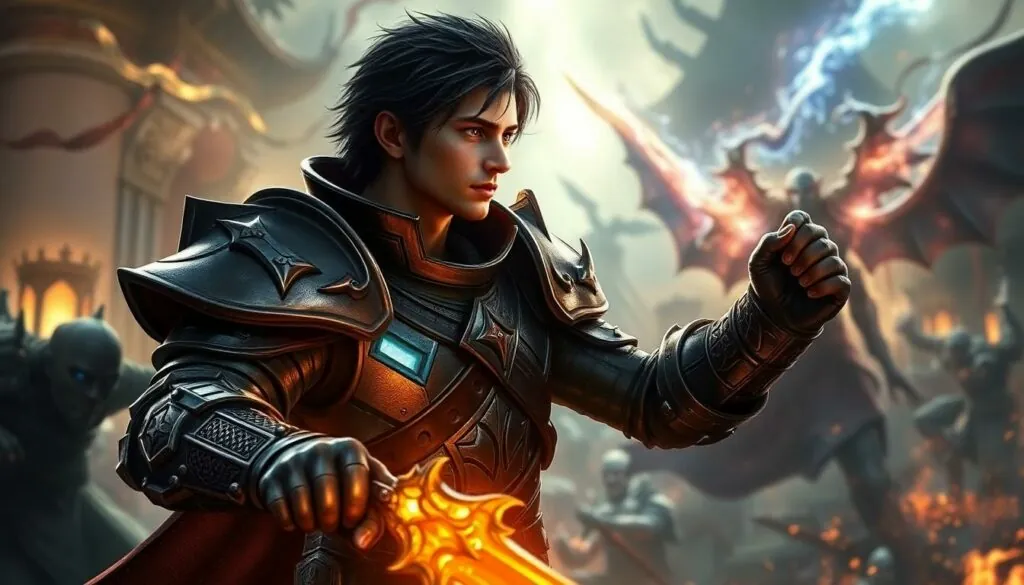Imagine diving into the dark, exhilarating world of Sanctuary once more, but this time equipped with a skill tree that feels like a buffet of power. Welcome to Diablo IV. Here, the skill tree system transforms your character into whatever demonic warrior your heart desires. With so many options, building the perfect character becomes both a thrilling challenge and a fun puzzle. Whether you’re aiming for pure destruction or cunning finesse, the secrets of the skill tree await you. Buckle up, because this guide will walk you through everything from skill categories to optimizing your build, and yes, we’ll try to keep the demon jokes to a minimum.
Table of Contents
ToggleOverview of the Skill Tree System

The skill tree in Diablo IV is a complex yet captivating feature that encourages players to explore numerous build possibilities. At its core, this system allows players to invest skill points into various abilities, shaping their character’s playstyle throughout the game. As players level up, they earn skill points which can be allocated in different areas of the tree. Each part of the skill tree unlocks unique abilities and enhances existing ones, allowing players to customize their characters to fit their strategies.
Navigating the skill tree is a bit like a choose-your-own-adventure book but with much more bloodshed. With multiple paths and options, players can often find themselves lost among contenders for the most effective builds. The challenge of deciding between skills adds layers to gameplay, inviting experimentation and creativity with each level gained.
Skill Categories and Types
In Diablo IV, skills are organized into categories, each offering distinct traits and playstyles. Understanding these categories is fundamental when choosing a build. Here are the primary types:
- Active Skills: These are your go-to offensive and defensive maneuvers. Requiring activation, they are pivotal during combat, offering players various aggressive or supportive options.
- Passive Skills: Unlike active skills, these operate in the background, providing underlying benefits like increased damage or enhanced survivability without direct user commands.
- Ultimate Skills: As the name suggests, these are powerful abilities that can turn the tide of battle. Players earn access to ultimate skills after accumulating enough experience and skill points.
- Specialized Skills: Certain builds focus on niche abilities tailored for specific scenarios. These can include crowd control or particular elemental damage types.
By recognizing the synergy between these skill categories, players can create a balanced yet aggressive build that suits their preferred playstyle.
Building Your Character: Skill Points and Allocation
The process of allocating skill points in Diablo IV can be as strategic as planning a battle. Players receive skill points as they reach new levels, each point providing the freedom to enhance the character in various ways. Here’s how to approach skill allocation effectively:
- Immediate Needs vs. Long-term Goals: Early in the game, it might be tempting to invest heavily in flashy skills. But, players should consider their long-term goals when planning allocations, some skills may unlock synergies later.
- Diversity Over Specialization: While specializing can be beneficial, creating a well-rounded character often leads to a more enjoyable play experience. Diverse abilities can handle various situations without relying heavily on one type of skill.
- Experimentation is Key: Don’t be afraid to experiment. The beauty of Diablo IV is that players can respec their skill points. So if a strategy isn’t working, it’s easy to pivot and try something new.
Understanding Skill Synergies and Combinations
A profound aspect of the Diablo IV skill tree is the interaction between skills, often referred to as synergies. Understanding how these combinations work is crucial for maximizing damage potential and survivability.
- Elemental Magic Combinations: Specific elemental skills can create devastating effects when combined. For example, pairing fire and ice spells can lead to massive damage outputs, controlling crowds while applying bonuses.
- Support from Passive Skills: Certain passive skills can complement active skills. For instance, a skill that increases critical hit damage synergizes beautifully with an active skill that deals rapid, low-damage attacks, amplifying overall damage.
- Ultimate Skill Combos: Combining ultimate skills effectively with others can lead to massive destruction. By timing these abilities correctly, players can maximize their impact during boss fights or intense encounters.
Tips for Optimizing Your Skill Tree Build
Optimizing a skill tree build isn’t just about choosing the most powerful skills: it’s about creating a synergy that works with personal playstyles. Here are some essential tips to enhance a player’s skill tree:
Common Skill Tree Mistakes to Avoid
Even the most experienced players can stumble when navigating the skill tree. Here are some common pitfalls to watch out for:
- Neglecting Passives: Many players become obsessed with flashy active skills and forget that passive skills can greatly enhance performance.
- Over-committing Early: Don’t pour all skill points into just one area early on. Maintain a balanced approach for a well-rounded character.
- Ignoring Synergies: Skills don’t operate in isolation. Understanding how they interact with each other is key to a powerful build.





